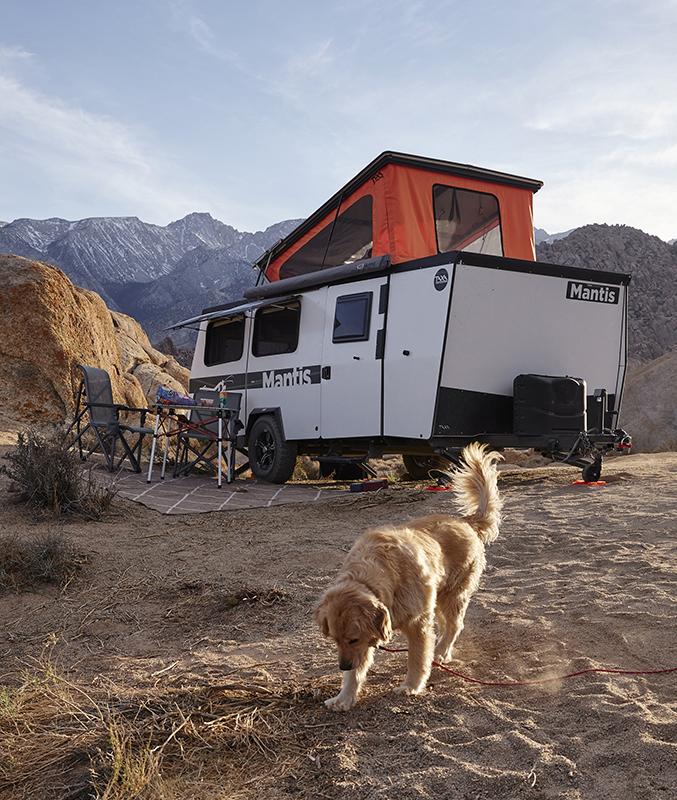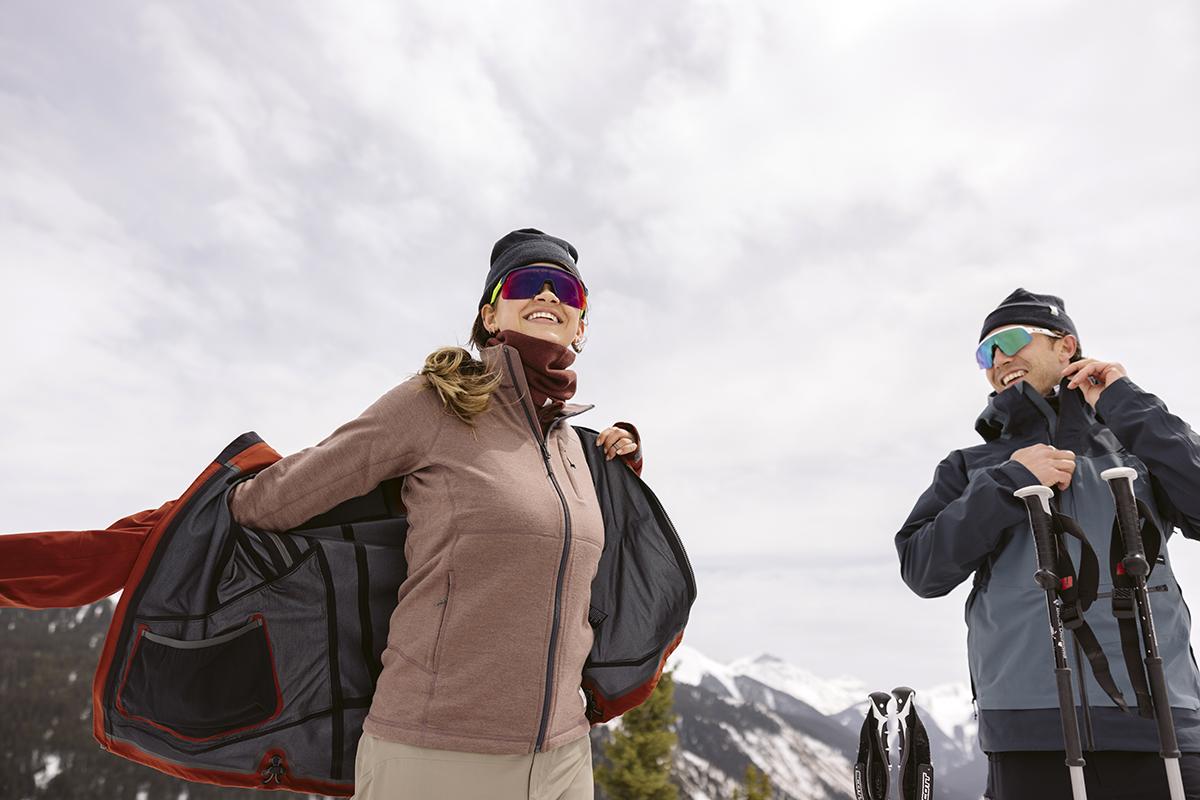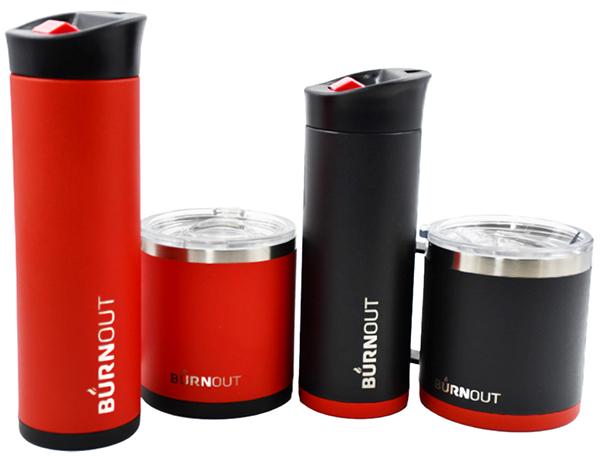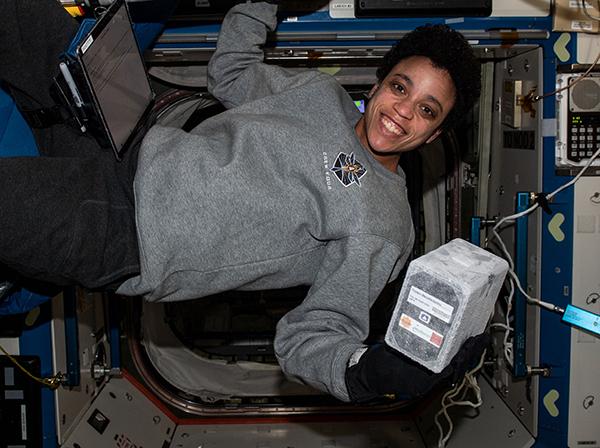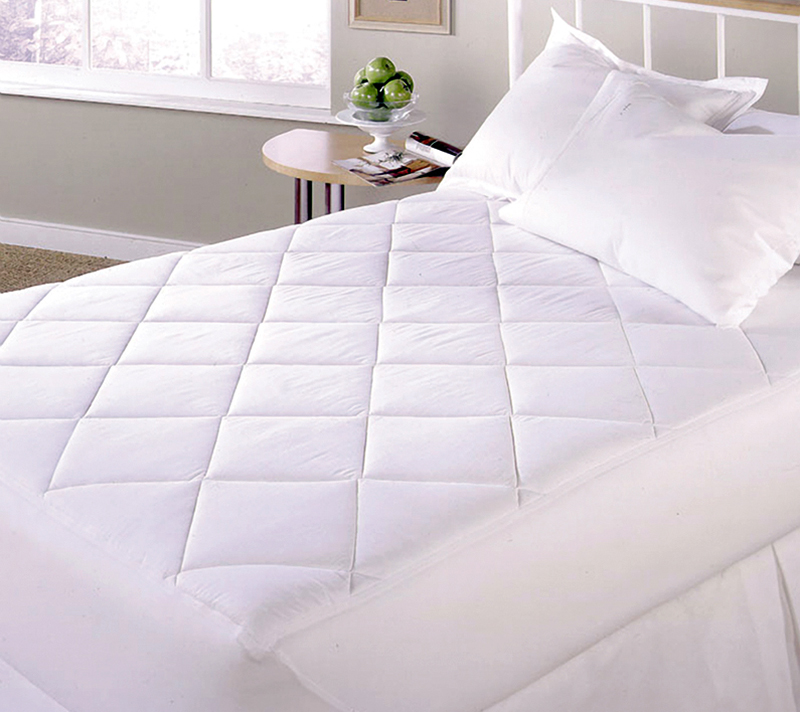
Covered in Comfort
Originating Technology/ NASA Contribution
In 1988, NASA began working with private industry to develop thermally adaptive phase-change materials that could be applied to astronauts’ suits and gloves for better protection against the bitter cold and scorching heat encountered in space.
Partnership
Triangle Research and Development Corporation, of Research Triangle Park, North Carolina, participated in a Phase I Small Business Innovation Research (SBIR) contract with Johnson Space Center to assist in the creation of phase-change materials for NASA. Prior to this contract, the company demonstrated the value of manufacturing textile fabrics and fibers containing impregnated, microencapsulated phase-change materials for the U.S. Air Force. This work, also carried out under a Phase I SBIR contract, explored the necessity of such materials to protect pilots from temperature extremes.
Product Outcome
Three years after the completion of the NASA contract, a Boulder, Colorado-based firm acquired from Triangle Research and Development Corporation the exclusive patent rights for incorporating phase-change technology in commercial fibers and fabrics. Ed Payne and Bernard Perry, the founders of Gateway Technologies, saw the potential for using phase-change technology to enhance the comfort levels for individuals with active outdoor lifestyles. In 1997, Gateway Technologies changed its name to Outlast Technologies, Inc. , and subsequently introduced the world to the first line of commercial gloves and footwear incorporating Outlast® Smart Fabric Technology.™
Beginning with the very first set of Outlast gloves, each Outlast product contains a lining that continuously interacts with the unique microclimate of the human body and the environment to moderate temperature from being too hot or too cold to being just right. Traditional clothing systems trap heat in during high activity. The human body naturally sweats to cool the skin, reducing the ability of clothing to keep the body dry and comfortable. Outlast technology, conversely, will keep individuals comfortable by absorbing body heat when too much is created, thereby diminishing the amount of moisture in their clothing. The clothing essentially stays drier and maintains its effectiveness. A “comfort zone” can also be sustained in cold- weather environments, as Outlast garments will release stored heat back to the body when it begins to chill or shiver.
Within the Outlast products there are millions of microcapsules called Thermocules® that recycle stored energy by absorbing and releasing excess body heat to balance temperature. To insure durability against the rigors of everyday wear and tear, phase-change materials are placed into these Thermocules, which are very much like miniature ping pong balls, but much smaller at 1/2 to 1/20th the diameter of a human hair. Not only are Thermocules small but their shells are very stable, since they are made to be inert and not melt. Once the phase-change materials are microencapsulated into Thermocules, they can be blended into compounds suited for fabric, fiber, and foam coatings.
From head to toe, Outlast Technologies is covering the everyday consumer with pure comfort. Boots, socks, underwear, shirts, pants, jackets, gloves, and hats have been made “smart” with the addition of Outlast Thermocules. Even bedding has successfully adopted the temperature- controlling technology. The company’s Adaptive Comfort® Bedding has been the answer to a restless night’s sleep for many people around the world. Recently named one of TIME magazine’s “Coolest Inventions,” the Adaptive Comfort Bedding line of mattress pads, pillows, and comforters helps to buffer temperature swings throughout the night, creating an environment where one is less likely to wake up from coldness or overheating. It takes just 90 seconds for the Thermocules to adapt to the body, helping to maintain an optimum temperature for rapid eye movement sleep. Thermal compatibility between sleep partners also increases, creating an individual “cocoon” around each sleeper. The Outlast phase-change materials can be found in Spring Industries, Inc.’s Wamsutta® EvenTemp® line and Serta, Inc.’s Sensifiber™ line.
In 2003, Outlast Technologies paired up with Gold Toe Brands, Inc., to roll out the new Gold Toe ADC™ (All Day Comfort) and Gold Toe MAX™ sock lines. As the first and only line of men’s dress/casual socks to feature Outlast phase-change fabric technology, Gold Toe ADC absorbs excess body heat to prevent clammy feet and overheating. The Gold Toe MAX line consists of athletic socks that keep even the most active feet comfortable, cool, and dry. To promote the new products, Gold Toe Brands launched the first national advertising campaign in the company’s 80-plus-year history. As part of this campaign, Gold Toe Brands recruited New York Yankees’ pitcher Mariano Rivera for an in-store promotion at Macy’s department stores.
Other sports celebrities have professed just how valuable Outlast products are in their training, including professional snowboarders Keir Dillon and Victoria Jealouse, and Iditarod champion and record-holder Mike Curiak. “The technology allows optimum performance,” says Dillon. “You can stay focused when you’re not overheating or freezing.”
“I can’t ride when I’m cold. I get scared, timid,” adds Jealouse, who spends much of her time in cold places such as Alaska. “This technology really works. You can’t believe you’re warm when it’s crazy cold outside, and then in the spring I don’t overheat.”
The list of products does not stop here. Outlast Technologies has entered strategic partnerships with over 200 premium-brand leaders in North America, Europe, and Asia, such as: Adidas, Bugatti, Burton, Kenneth Cole, Lands’ End, Nordstrom, Rainforest, The North Face, Timberland, and Weatherproof. Expanding beyond consumer apparel, Outlast material has been considered by General Motors as the material of choice for leather bucket seats in the conceptual design of future Hummer H2 sports utility models.
Meanwhile, hundreds of miles above the Earth, Outlast apparel is making space exploration more comfortable for astronauts. NASA will continue to test new Outlast gloves and footwear in order to make those living and working in space feel “more at home.”
Outlast,® Thermocules,® and Adaptive Comfort® are registered trademarks of Outlast Technologies, Inc.
Smart Fabric Technology™ is a trademark of Outlast Technologies, Inc.
Wamsutta® and EvenTemp® are registered trademarks of Spring Industries, Inc.
Sensifiber™ is a trademark of Serta, Inc.
Gold Toe ADC™ and Gold Toe MAX™ are trademarks of Gold Toe Brands, Inc.
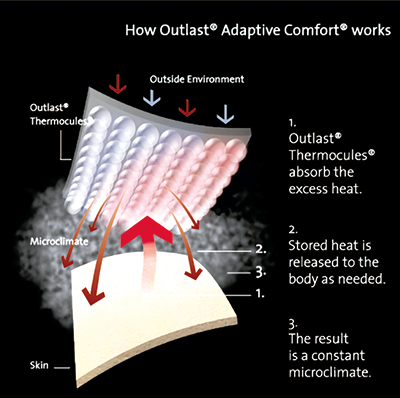
Outlast® Thermocules® work with the body to regulate temperature and humidity better than fabrics or insulation alone. The result is a microclimate that is optimized for individualized comfort.

With Adaptive Comfort® Bedding, there is likely to be less tossing and turning to get comfortable during the night, and less need to pile blankets on the bed when the weather is cold.









